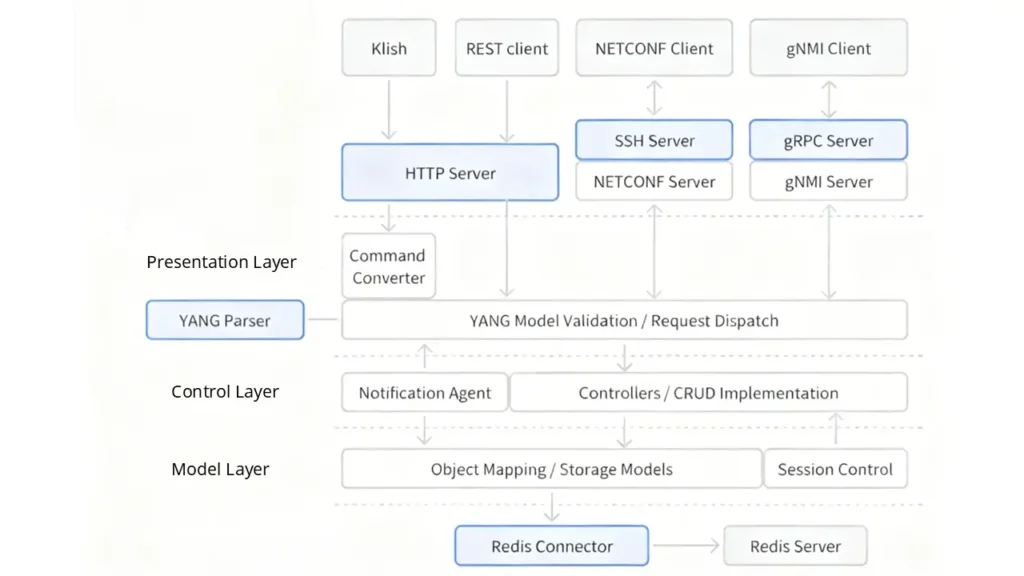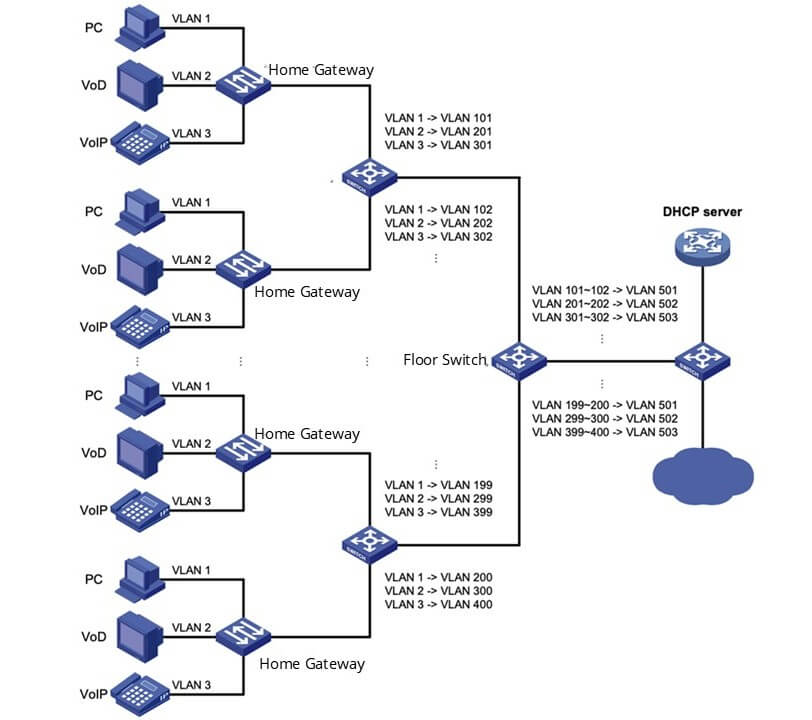Enterprise SONiC AsterNOS v6.1R004 — Quarterly SONiC Community Alignment with Debian Bookworm
written by Asterfuison
Table of Contents
Introduction: Milestone for Alignment with SONiC Community
The evolution of open networking relies on the continuous progress of the SONiC community, as well as the innovation and development capabilities of individual enterprises. Following the successful delivery of Enterprise SONiC AsterNOS v5.2R014, Asterfusion has officially released AsterNOS-V6.1R004 in Q3, aiming to align more closely with the SONiC community.
[Core Alignment] This release marks a major synchronization milestone with the SONiC community. The underlying operating system has been fully upgraded to Debian Bookworm, ensuring complete consistency with the SONiC baseline.
AsterNOS-V6.1R004 focuses on four key areas: enhanced system customization, advanced Layer 2 capabilities, and stronger support for white-box hardware and open development ecosystems.
The following sections highlight the unique features introduced in AsterNOS-V6.1R004 — the key differences from version v5.2R014.
Upgrade 1: Netconf/YANG Support
To meet the growing demand for network automation and centralized management, AsterNOS-V6.1R004 introduces Netconf/YANG data model support for the first time. This enables Asterfusion switches to integrate seamlessly into enterprise networks while addressing the common issues of low configuration efficiency and human error.
Based on the architecture shown in Figure 1, AsterNOS now supports Klish, Restconf, Netconf, and gNMI simultaneously. By consolidating multiple configuration interfaces, the system significantly reduces operational complexity.

The direction of the arrow in the figure indicates the direction of the actively initiated call.
Upgrade 2: Enhanced L2 Features and Fine-Grained Traffic Control
This update enhances core Layer 2 functions and QoS capabilities in Enterprise SONiC deployments, providing enterprises and customers with more refined network management.
The main new features include:
- VLAN Mapping Support: Introduces flexible VLAN mapping, enabling inner/outer VLAN translation at the network edge or access layer. This greatly simplifies deployment in multi-tenant and WAN environments. The current version supports 1:1 VLAN mapping, allowing incoming packets with a specific VLAN ID to be mapped to a new VLAN ID (i.e., VLAN tag replacement).
As shown in Figure 2, to differentiate identical services among multiple users, an access or corridor switch can map the same service traffic to different VLANs, achieving per-user isolation.

- TC Priority Mapping (TC → dot1p / TC → DSCP): Provides fine-grained QoS mapping from traffic classification (TC) to Layer 2 (802.1p) or Layer 3 (DSCP) priority marking. By modifying specific header fields, the system maps Layer 2 802.1p priorities to Layer 3 DSCP values, ensuring priority consistency and precise control across different network boundaries and device types.

- L2 Protocol Tunnel Support: Enables Layer 2 protocol tunneling, allowing STP, LACP, PVSTP, and CDP control protocols to transparently pass through service provider networks. This ensures the integrity of Layer 2 protocols across inter-site links.
As shown in Figure 4, through steps ① and ②, the destination MAC is replaced when entering the tunnel and restored when exiting the tunnel, enabling transparent Layer 2 frame forwarding.

Upgrade 3: Enhanced Access Security and Port Control
AsterNOS-V6.1R004 has made significant upgrades to access-side security and device management to meet the security and compliance requirements of campus and edge networks.
The new features include:
- Port Security Support: Introduces port security by restricting which MAC addresses can access a port, effectively preventing unauthorized access or MAC flooding attacks. Supports static MACs, dynamic MACs, and sticky MACs.
- MAC Learning Priority Control: Allows administrators to assign priority levels for MAC address learning, ensuring critical devices maintain access while preventing malicious or misconfigured devices from interfering by spoofing MAC addresses on lower-priority ports.

- Other Key L2 Features: Supports ND/DHCP snooping entry persistence, allowing rapid service recovery after device reboot. Supports STP/RSTP/MSTP mode switching, enabling flexible selection of the spanning tree protocol based on network requirements.
Upgrade 4: Core Platform and Customization Foundation
The AsterNOS-V6.1R004 platform lays a solid foundation for customer Enterprise SONiC white-box ecosystems and secondary development, which is a key focus of this update.
- Full Upgrade to Debian Bookworm: The underlying OS has been successfully upgraded to the latest stable Debian version, fully aligning with the SONiC community. This ensures long-term system stability and up-to-date dependency environments.
- Open Customization Capabilities:AsterNOS-V6.1R004 emphasizes clear interfaces and documentation to support two core customer groups:
Conclusion: Ready to Use !
The release of AsterNOS-V6.1R004 marks a new phase of greater openness and flexibility for Asterfusion Enterprise SONiC.
AsterNOS-V6.1R004 provides a community-aligned Enterprise SONiC baseline, serving as the primary maintenance branch for the upcoming quarter (V6.1R4, R4P1, P2…). During this period, the focus will be on branch stability and enterprise-grade enhancements. The next quarter (e.g., V7.1) will continue code synchronization with the community to establish a new stable branch.
Whether you are seeking high-performance white-box hardware with custom SONiC development or secondary development based on the platform, AsterNOS-V6.1R004 is the optimal choice.
Take action now:
📅 Upgrade Experience: Try the latest AsterNOS-V6.1R004 Image today and experience Enterprise SONiC performance.
📥 View Full Release Notes



